|
In a startling revelation, recently declassified documents have brought to the forefront a chilling aspect of military strategy: the deliberate use of forest fires as weapons of war. Among these documents is a particularly intriguing report sponsored by the Defense Advanced Research Project Agency (DARPA) which delves into the potential applications of incendiary tactics in military operations. The document, published by the U.S. Department of Defense in 1970, outlines various techniques and scenarios wherein fires can be utilized to gain tactical advantages in combat situations. From creating smoke screens to obstruct enemy visibility to initiating large-scale forest fires to disrupt enemy supply lines and infrastructure, the report explores the myriad ways in which fire can be weaponized to achieve military objectives. Of particular concern is the section detailing the use of forest fires as a means of psychological warfare, wherein the intentional ignition of fires in enemy territory is aimed at instilling fear, confusion, and panic among civilian populations. By targeting forests, which are often integral to local ecosystems and communities, military planners sought to inflict not only physical damage but also psychological trauma, thereby undermining enemy morale and resolve. The implications of such tactics are profound, extending far beyond the immediate battlefield. Forest fires, once ignited, can rapidly escalate into uncontrollable infernos, engulfing vast expanses of land, devouring flora and fauna, and posing grave risks to human life and property. The indiscriminate nature of fire knows no bounds, sparing neither military targets nor civilian populations in its destructive path. Moreover, the use of forest fires as military weapons raises serious ethical and environmental concerns. The deliberate ignition of fires in densely forested areas not only poses immediate risks to human safety but also inflicts long-term damage to fragile ecosystems, biodiversity, and natural resources. The toll on wildlife habitats, air quality, water sources, and soil integrity can be irreparable, perpetuating ecological devastation for generations to come. In addition to the ecological ramifications, the revelation of forest fires being employed as military weapons underscores the nefarious tactics employed by elements within the so-called "deep state." This clandestine network, operating outside the purview of democratic oversight and accountability, is purportedly driven by ulterior motives and clandestine agendas that prioritize power and control over the welfare of people and planet. The use of forest fires as instruments of war epitomizes the callous disregard for human life, environmental stewardship, and international law exhibited by clandestine actors operating within the deep state. By weaponizing natural disasters for geopolitical gain, these shadowy forces perpetuate a cycle of destruction and suffering that reverberates far beyond the confines of the battlefield. In light of these revelations, it is incumbent upon governments, civil society organizations, and concerned citizens worldwide to demand transparency, accountability, and responsible stewardship in matters of national security and defense. The wanton destruction wrought by forest fires used as military weapons serves as a stark reminder of the urgent need for vigilance, oversight, and the safeguarding of our shared planet and its inhabitants. Only through collective action and unwavering commitment to peace, justice, and environmental preservation can we hope to mitigate the grave threats posed by the dark underbelly of militarism and covert warfare. Manipulating Climate Change NarrativesOne of the most insidious aspects of the use of forest fires as military weapons lies in the potential manipulation of climate change narratives for ulterior motives. In the wake of devastating fires, clandestine actors within the deep state may exploit the chaos and destruction to advance agendas aimed at consolidating control and power over the masses. By attributing forest fires to "climate change" and framing them as the result of extreme weather events purportedly exacerbated by human activity, these actors seek to justify intrusive policies and measures that encroach upon individual liberties and civil rights. This includes the implementation of carbon tracking and taxation systems, stringent environmental regulations, and centralized control over energy production and consumption. Under the guise of addressing climate-related emergencies, governments and supranational organizations may exploit public fear and uncertainty to expand their authority and influence, thereby furthering agendas of social engineering and population control. The narrative of impending environmental catastrophe serves as a pretext for imposing draconian measures that curtail freedom of movement, expression, and economic autonomy. Moreover, the misattribution of forest fires to climate change conveniently deflects attention away from the role of military actors in their deliberate ignition and propagation. By shifting blame to abstract concepts like "global warming" and "carbon emissions," covert agendas of militarization and geopolitical maneuvering remain obscured, allowing clandestine actors to operate with impunity and evade accountability. In this way, forest fires become not only tools of physical destruction but also instruments of psychological manipulation and social control. The exploitation of climate change narratives serves to perpetuate a climate of fear and dependency, wherein populations acquiesce to authoritarian measures in the name of environmental salvation. To combat such nefarious tactics, it is imperative that citizens remain vigilant, informed, and empowered to challenge official narratives and question the motives behind proposed policies and interventions. By advocating for transparency, accountability, and evidence-based decision-making, individuals can resist the manipulation of climate change narratives for political gain and safeguard democratic principles and human rights. In the face of converging crises – from environmental degradation to militarization and authoritarianism – solidarity, resilience, and collective action are paramount. Only through a concerted effort to expose and oppose covert agendas of manipulation and control can we hope to build a more just, equitable, and sustainable world for present and future generations. Directed EnergyOne of the most insidious aspects of the use of forest fires as military weapons lies in the speculation surrounding their origins, which range from natural causes to deliberate human intervention and even advanced technologies such as Directed Energy Weapons (DEWs). As fires rage through vast expanses of woodland, leaving devastation in their wake, questions abound regarding the true perpetrators behind these infernos. While conventional explanations point to factors like arson and lightning strikes, a growing body of evidence suggests the involvement of more clandestine actors with access to sophisticated weaponry and covert operations. Among the most concerning theories is the utilization of Directed Energy Weapons, capable of emitting highly focused energy beams to ignite and propagate fires over long distances with pinpoint accuracy. Instances such as the operations conducted by the Air Force Research Laboratory (AFRL) in Maui, where DEWs are tested and developed for military applications, have fueled speculation regarding their potential role in the creation of forest fires. Although the AFRL maintains that their research is aimed at enhancing national security and defense capabilities, concerns persist regarding the unintended consequences of deploying such technology in civilian environments. The prospect of military entities wielding Directed Energy Weapons to instigate or exacerbate forest fires raises profound ethical and legal questions about the use of force and the protection of civilian populations and natural habitats. In the absence of transparency and accountability, suspicions linger regarding the true intentions behind these operations and their impact on communities and ecosystems. Moreover, the intersection of DEW technology with narratives of climate change further complicates the discourse surrounding forest fires, as speculation abounds regarding the potential manipulation of environmental crises for geopolitical ends. By exploiting public fears and vulnerabilities, clandestine actors may seek to exploit the chaos and destruction wrought by fires to advance agendas of control and domination. In this volatile landscape of uncertainty and speculation, it becomes increasingly challenging to discern truth from deception and fact from fiction. As communities grapple with the aftermath of forest fires and the specter of future conflagrations looms large, it is imperative that rigorous investigation and scrutiny be applied to unraveling the complexities of these crises and holding accountable those responsible for their creation and escalation. Ultimately, the manipulation of forest fires for military purposes and the exploitation of climate change narratives for political gain represent grave threats to global stability and security. Only through vigilant oversight, informed discourse, and collective action can we hope to confront the multifaceted challenges posed by the weaponization of natural disasters and safeguard the well-being of humanity and the planet. references“Directed Energy – Air Force Research Laboratory.” Afresearchlab.com, afresearchlab.com/technology/directed-energy/.
Defense Technical Information Center. DTIC AD0509724: Forest Fire as a Military Weapon. Internet Archive, US Department of Agriculture Forest Service, 1 June 1970, archive.org/details/DTIC_AD0509724/page/n1/mode/2up?view=theater.
0 Comments
The World Economic Forum (WEF) has offered a glimpse into a potentially dystopian future with its "8 predictions for the world in 2030." These prognostications paint a vivid picture of a world undergoing profound transformations. Let's delve into each prediction, exploring the potential dystopian aspects that lurk beneath the surface.
Unveiling the wizard of Oz
Behind the curtain of the WEF's predictions lies a concerted effort to bring about change. The WEF has been actively engaged in influencing policies and providing financial support through diverse channels to pave the way for the envisioned future.
As these initiatives unfold, the global community must remain vigilant, ensuring that the pursuit of progress is coupled with ethical considerations and a commitment to the well-being of all individuals.
From 1973 to 2011, sperm counts in men from America, Europe, Australia and New Zealand have dropped by over 50 percent while the number of boys and young men suffering from genital deformities, sperm abnormalities and testicular cancer has increased. As the World Health Organization declares ‘vaccine hesitancy’ to be a top threat to global health in 2019, it turns a blind eye to declining male fertility and its causes. 'The Disappearing Male' examines the role of endocrine disrupting chemicals such as the bisphenols and phthalates in reduced fertility rates. These compounds are found in everyday plastics from drinking bottles to soft toys for infants.
Dr Sherri Tenpenny, is the American osteopathic medical doctor, researcher and author. She has invested 20 years, and over 40,000 hours, researching, documenting and exposing the complex issues of vaccine development, testing and distribution. As an internationally renowned speaker and author, her articles have been translated into over 12 languages. Dr. Tenpenny has worked as an Emergency Medicine physician and were Director of a Level 2 Trauma centre for over a decade.
She now runs her own medical centre, providing an integrated approach to health, which has attracted patients from 50 states and 17 countries, with the doctrine “the body can heal itself”. In our first conversation on London Real in May, we discussed vaccine legislation, testing and distribution. In this episode we’re going deeper on masks and why they won’t protect you, contact tracing, and the psychological damage of social distancing. For more information from Dr. Tenpenny, download her latest paper, Conclusion Regarding Masks They Do Not Work now!
Dr. Rashid Buttar is the osteopathic physician and author best known for his views on Coronavirus and its management.
His first book, “The 9 Steps to Keep the Doctor Away” became a Wall Street Journal, USA Today and Amazon INTERNATIONAL BEST SELLER and has now been translated into multiple languages. Download Clips
1. The Panel Want To Address The Agenda Behind Covid-19
2. Should We Use Face Masks 3. Should We Get To Vaccine In The Next 12 Months 4. Panels’ Thoughts On Censorship Toward The Vaccine And Mainstream Media 5. Panels’ Thought On How We Are Testing And Diagnosing Covid-19 6. Panels’ Thoughts On 5G 7. Why Is Ofcom Censoring World Like Coronavirus 8. Panels’ Thoughts On Anthony Fauci And Public Policy 9. Panels’ Thoughts On The Origin Of The Virus 10. Does The Panel Believe That People Did Not Die Of Covid-19 But Of Other Causes 12. Panels’ Thoughts On Social Distancing 13. Panels’ Thoughts On Hydroxychloroquine 14. Panels’ Thoughts On Facing Ridicule From Mainstream Media 15. Panels’ Thoughts On If This Was All Just A Mastermind Plot 16. First Doctor Panel Was A Success 17. Panel Meditation Triple board-certified M.D., Dr. Zach, joins Del in an evolutionary discussion on why Coronavirus is here, what it’s try to tell us, and how emerge from the darkness.
Zach Bush MD is a physician specializing in internal medicine, endocrinology and hospice care. He is an internationally recognized educator and thought leader on the microbiome as it relates to health, disease, and food systems. Dr Zach founded Seraphic Group and the nonprofit Farmer’s Footprint to develop root-cause solutions for human and ecological health. His passion for education reaches across many disciplines, including topics such as the role of soil and water ecosystems in human genomics, immunity, and gut/brain health. His education has highlighted the need for a radical departure from chemical farming and pharmacy, and his ongoing efforts are providing a path for consumers, farmers, and mega-industries to work together for a healthy future for people and planet. The pandemic presents an opportune time to get re-acquainted with Zach Bush.
A triple board-certified physician specializing in internal medicine, endocrinology and hospice care, today’s guest is an internationally recognized educator, speaker and authority on all facets of well-being. Focused on the relationship between the microbiome, disease and food production systems, Zach is the founder of Seraphic Group, an organization devoted to developing root-cause solutions for human and ecological health in the sectors of big farming, big pharma, and Western Medicine at large He is also the founder of Farmers Footprint, a non-profit coalition of farmers, educators, doctors, scientists, and business leaders aiming to expose the deleterious human and environmental impacts of chemical farming and pesticide reliance — while simultaneously offering a path forward through regenerative agricultural practices to rebuild living biodiversity and ultimately reverse climate change. To me, Zach is a master healer. A man I call a friend. And a critical voice in the conversation we need to have in this unprecedented moment of global calamity. Without minimizing the profound severity of our current situation, I cannot overstate the unique opportunity we are being gifted. Like an addict’s moment of clarity, the pandemic presents a singular occasion to break the chains of denial that imprison us. A moment to objectively examine that which no longer serves us. The behaviors that repeatedly lead us astray. An economic system that demands constant growth at the cost of the collective good. A political system that preys on fear to divide. A conglomerated food apparatus that foments disease. A pharmaceutical complex that relies upon that disease to create dependency. And ultimately a collective obsession with ego, power, money, and material consumption that is rapidly eroding our biosphere, degrading our integrity — and separating us from others, ourselves and our innate divinity. I aspire that we emerge from this planetary wake up call not as victims, but empowered — armed with greater clarity to reimagine and actualize a better, more sustainable, purposeful, intentional and fulfilling life experience for ourselves, our loved ones, future generations and frankly the world at large. I can think of few people better equipped to traverse this terrain than Zach, alongside me for his fourth appearance on the show. Well worth your undivided attention, today he shares his unique perspective on the coronavirus epidemic in a conversation that goes behind what is happening. How to best navigate it. And what the pandemic signifies for humanity and the future of planetary ecology. Transcript:
I’m an atmospheric physicist. I’ve published more than 200 scientific papers. For 30 years I taught at MIT, during which time the climate has changed remarkably little. But the cry of “global warming” has grown ever more shrill. In fact, it seems that the less the climate changes, the louder the voices of the climate alarmists get. So, let’s clear the air and create a more accurate picture of where we really stand on the issue of global warming or, as it is now called -- climate change. There are basically three groups of people dealing with this issue. Groups one and two are scientists. Group three consists mostly, at its core, of politicians, environmentalists and media. Group one is associated with the scientific part of the United Nation’s International Panel on Climate Change or IPCC (Working Group 1). These are scientists who mostly believe that recent climate change is primarily due to man’s burning of fossil fuels -- oil, coal and natural gas. This releases C02, carbon dioxide, into the atmosphere and, they believe, this might eventually dangerously heat the planet. Group two is made up of scientists who don’t see this as an especially serious problem. This is the group I belong to. We’re usually referred to as skeptics. We note that there are many reasons why the climate changes -- the sun, clouds, oceans, the orbital variations of the earth, as well as a myriad of other inputs. None of these is fully understood, and there is no evidence that CO2 emissions are the dominant factor. But actually there is much agreement between both groups of scientists. The following are such points of agreement:
Most importantly, the scenario that the burning of fossil fuels leads to catastrophe isn’t part of what either group asserts. So why are so many people worried, indeed, panic stricken about this issue? Here’s where Group Three comes in -- the politicians, environmentalists, and media. Global Warming Alarmism provides them, more than any other issue, with the things they most want: For politicians it’s money and power. For environmentalists it’s money for their organizations and confirmation of their near religious devotion to the idea that man is a destructive force acting upon nature. And for the media it’s ideology, money, and headlines -- doomsday scenarios sell. Meanwhile, over the last decade, scientists outside of climate physics have jumped on the bandwagon, publishing papers blaming global warming for everything from acne to the Syrian civil war. And, crony capitalists have eagerly grabbed for the subsidies that governments have so lavishly provided. Unfortunately, group three is winning the argument because they have drowned out the serious debate that should be going on. But while politicians, environmentalists and media types can waste a lot of money and scare a lot of people, they won’t be able to bury the truth. The climate will have the final word on that. I’m Richard Lindzen, emeritus professor of Atmospheric Sciences at MIT, for PragerUniversity. Transcript:
I love a challenge, and saving the Earth is probably a good one. We all know the Earth is in trouble. We have now entered in the 6X, the sixth major extinction on this planet. I often wondered, if there was a United Organization of Organisms -- otherwise known as "Uh-Oh" -- and every organism had a right to vote, would we be voted on the planet, or off the planet? I think that vote is occurring right now. I want to present to you a suite of six mycological solutions, using fungi, and these solutions are based on mycelium. The mycelium infuses all landscapes, it holds soils together, it's extremely tenacious. This holds up to 30,000 times its mass. They're the grand molecular disassemblers of nature -- the soil magicians. They generate the humus soils across the landmasses of Earth. We have now discovered that there is a multi-directional transfer of nutrients between plants, mitigated by the mcyelium -- so the mycelium is the mother that is giving nutrients from alder and birch trees to hemlocks, cedars and Douglas firs. Dusty and I, we like to say, on Sunday, this is where we go to church. I'm in love with the old-growth forest, and I'm a patriotic American because we have those. Most of you are familiar with Portobello mushrooms. And frankly, I face a big obstacle. When I mention mushrooms to somebody, they immediately think Portobellos or magic mushrooms, their eyes glaze over, and they think I'm a little crazy. So, I hope to pierce that prejudice forever with this group. We call it mycophobia, the irrational fear of the unknown, when it comes to fungi. Mushrooms are very fast in their growth. Day 21, day 23, day 25. Mushrooms produce strong antibiotics. In fact, we're more closely related to fungi than we are to any other kingdom. A group of 20 eukaryotic microbiologists published a paper two years ago erecting opisthokonta -- a super-kingdom that joins animalia and fungi together. We share in common the same pathogens. Fungi don't like to rot from bacteria, and so our best antibiotics come from fungi. But here is a mushroom that's past its prime. After they sporulate, they do rot. But I propose to you that the sequence of microbes that occur on rotting mushrooms are essential for the health of the forest. They give rise to the trees, they create the debris fields that feed the mycelium. And so we see a mushroom here sporulating. And the spores are germinating, and the mycelium forms and goes underground. In a single cubic inch of soil, there can be more than eight miles of these cells. My foot is covering approximately 300 miles of mycelium. This is photomicrographs from Nick Read and Patrick Hickey. And notice that as the mycelium grows, it conquers territory and then it begins the net. I've been a scanning electron microscopist for many years, I have thousands of electron micrographs, and when I'm staring at the mycelium, I realize that they are microfiltration membranes. We exhale carbon dioxide, so does mycelium. It inhales oxygen, just like we do. But these are essentially externalized stomachs and lungs. And I present to you a concept that these are extended neurological membranes. And in these cavities, these micro-cavities form, and as they fuse soils, they absorb water. These are little wells. And inside these wells, then microbial communities begin to form. And so the spongy soil not only resists erosion, but sets up a microbial universe that gives rise to a plurality of other organisms. I first proposed, in the early 1990s, that mycelium is Earth's natural Internet. When you look at the mycelium, they're highly branched. And if there's one branch that is broken, then very quickly, because of the nodes of crossing -- Internet engineers maybe call them hot points -- there are alternative pathways for channeling nutrients and information. The mycelium is sentient. It knows that you are there. When you walk across landscapes, it leaps up in the aftermath of your footsteps trying to grab debris. So, I believe the invention of the computer Internet is an inevitable consequence of a previously proven, biologically successful model. The Earth invented the computer Internet for its own benefit, and we now, being the top organism on this planet, are trying to allocate resources in order to protect the biosphere. Going way out, dark matter conforms to the same mycelial archetype. I believe matter begets life; life becomes single cells; single cells become strings; strings become chains; chains network. And this is the paradigm that we see throughout the universe. Most of you may not know that fungi were the first organisms to come to land. They came to land 1.3 billion years ago, and plants followed several hundred million years later. How is that possible? It's possible because the mycelium produces oxalic acids, and many other acids and enzymes, pockmarking rock and grabbing calcium and other minerals and forming calcium oxalates. Makes the rocks crumble, and the first step in the generation of soil. Oxalic acid is two carbon dioxide molecules joined together. So, fungi and mycelium sequester carbon dioxide in the form of calcium oxalates. And all sorts of other oxalates are also sequestering carbon dioxide through the minerals that are being formed and taken out of the rock matrix. This was first discovered in 1859. This is a photograph by Franz Hueber. This photograph's taken 1950s in Saudi Arabia. 420 million years ago, this organism existed. It was called Prototaxites. Prototaxites, laying down, was about three feet tall. The tallest plants on Earth at that time were less than two feet. Dr. Boyce, at the University of Chicago, published an article in the Journal of Geology this past year determining that Prototaxites was a giant fungus, a giant mushroom. Across the landscapes of Earth were dotted these giant mushrooms. All across most land masses. And these existed for tens of millions of years. Now, we've had several extinction events, and as we march forward -- 65 million years ago -- most of you know about it -- we had an asteroid impact. The Earth was struck by an asteroid, a huge amount of debris was jettisoned into the atmosphere. Sunlight was cut off, and fungi inherited the Earth. Those organisms that paired with fungi were rewarded, because fungi do not need light. More recently, at Einstein University, they just determined that fungi use radiation as a source of energy, much like plants use light. So, the prospect of fungi existing on other planets elsewhere, I think, is a forgone conclusion, at least in my own mind. The largest organism in the world is in Eastern Oregon. I couldn't miss it. It was 2,200 acres in size: 2,200 acres in size, 2,000 years old. The largest organism on the planet is a mycelial mat, one cell wall thick. How is it that this organism can be so large, and yet be one cell wall thick, whereas we have five or six skin layers that protect us? The mycelium, in the right conditions, produces a mushroom -- it bursts through with such ferocity that it can break asphalt. We were involved with several experiments. I'm going to show you six, if I can, solutions for helping to save the world. Battelle Laboratories and I joined up in Bellingham, Washington. There were four piles saturated with diesel and other petroleum waste: one was a control pile; one pile was treated with enzymes; one pile was treated with bacteria; and our pile we inoculated with mushroom mycelium. The mycelium absorbs the oil. The mycelium is producing enzymes -- peroxidases -- that break carbon-hydrogen bonds. These are the same bonds that hold hydrocarbons together. So, the mycelium becomes saturated with the oil, and then, when we returned six weeks later, all the tarps were removed, all the other piles were dead, dark and stinky. We came back to our pile, it was covered with hundreds of pounds of oyster mushrooms, and the color changed to a light form. The enzymes remanufactured the hydrocarbons into carbohydrates -- fungal sugars. Some of these mushrooms are very happy mushrooms. They're very large. They're showing how much nutrition that they could've obtained. But something else happened, which was an epiphany in my life. They sporulated, the spores attract insects, the insects laid eggs, eggs became larvae. Birds then came, bringing in seeds, and our pile became an oasis of life. Whereas the other three piles were dead, dark and stinky, and the PAH's -- the aromatic hydrocarbons -- went from 10,000 parts per million to less than 200 in eight weeks. The last image we don't have. The entire pile was a green berm of life. These are gateway species, vanguard species that open the door for other biological communities. So I invented burlap sacks, bunker spawn -- and putting the mycelium -- using storm blown debris, you can take these burlap sacks and put them downstream from a farm that's producing E. coli, or other wastes, or a factory with chemical toxins, and it leads to habitat restoration. So, we set up a site in Mason County, Washington, and we've seen a dramatic decrease in the amount of coliforms. And I'll show you a graph here. This is a logarithmic scale, 10 to the eighth power. There's more than a 100 million colonies per gram, and 10 to the third power is around 1,000. In 48 hours to 72 hours, these three mushroom species reduced the amount of coliform bacteria 10,000 times. Think of the implications. This is a space-conservative method that uses storm debris -- and we can guarantee that we will have storms every year. So, this one mushroom, in particular, has drawn our interest over time. This is my wife Dusty, with a mushroom called Fomitopsis officinalis -- Agarikon. It's a mushroom exclusive to the old-growth forest that Dioscorides first described in 65 A.D. as a treatment against consumption. This mushroom grows in Washington State, Oregon, northern California, British Columbia, now thought to be extinct in Europe. May not seem that large -- let's get closer. This is extremely rare fungus. Our team -- and we have a team of experts that go out -- we went out 20 times in the old-growth forest last year. We found one sample to be able to get into culture. Preserving the genome of these fungi in the old-growth forest I think is absolutely critical for human health. I've been involved with the U.S. Defense Department BioShield program. We submitted over 300 samples of mushrooms that were boiled in hot water, and mycelium harvesting these extracellular metabolites. And a few years ago, we received these results. We have three different strains of Agarikon mushrooms that were highly active against poxviruses. Dr. Earl Kern, who's a smallpox expert of the U.S. Defense Department, states that any compounds that have a selectivity index of two or more are active. 10 or greater are considered to be very active. Our mushroom strains were in the highly active range. There's a vetted press release that you can read -- it's vetted by DOD -- if you Google "Stamets" and "smallpox." Or you can go to NPR.org and listen to a live interview. So, encouraged by this, naturally we went to flu viruses. And so, for the first time, I am showing this. We have three different strains of Agarikon mushrooms highly active against flu viruses. Here's the selectivity index numbers -- against pox, you saw 10s and 20s -- now against flu viruses, compared to the ribavirin controls, we have an extraordinarily high activity. And we're using a natural extract within the same dosage window as a pure pharmaceutical. We tried it against flu A viruses -- H1N1, H3N2 -- as well as flu B viruses. So then we tried a blend, and in a blend combination we tried it against H5N1, and we got greater than 1,000 selectivity index. (Applause) I then think that we can make the argument that we should save the old-growth forest as a matter of national defense. I became interested in entomopathogenic fungi -- fungi that kill insects. Our house was being destroyed by carpenter ants. So, I went to the EPA homepage, and they were recommending studies with metarhizium species of a group of fungi that kill carpenter ants, as well as termites. I did something that nobody else had done. I actually chased the mycelium, when it stopped producing spores. These are spores -- this is in their spores. I was able to morph the culture into a non-sporulating form. And so the industry has spent over 100 million dollars specifically on bait stations to prevent termites from eating your house. But the insects aren't stupid, and they would avoid the spores when they came close, and so I morphed the cultures into a non-sporulating form. And I got my daughter's Barbie doll dish, I put it right where a bunch of carpenter ants were making debris fields, every day, in my house, and the ants were attracted to the mycelium, because there's no spores. They gave it to the queen. One week later, I had no sawdust piles whatsoever. And then -- a delicate dance between dinner and death -- the mycelium is consumed by the ants, they become mummified, and, boing, a mushroom pops out of their head. (Laughter) Now after sporulation, the spores repel. So, the house is no longer suitable for invasion. So, you have a near-permanent solution for reinvasion of termites. And so my house came down, I received my first patent against carpenter ants, termites and fire ants. Then we tried extracts, and lo and behold, we can steer insects to different directions. This has huge implications. I then received my second patent -- and this is a big one. It's been called an Alexander Graham Bell patent. It covers over 200,000 species. This is the most disruptive technology -- I've been told by executives of the pesticide industry -- that they have ever witnessed. This could totally revamp the pesticide industries throughout the world. You could fly 100 Ph.D. students under the umbrella of this concept, because my supposition is that entomopathogenic fungi, prior to sporulation, attract the very insects that are otherwise repelled by those spores. And so I came up with a Life Box, because I needed a delivery system. The Life Box -- you're gonna be getting a DVD of the TED conference -- you add soil, you add water, you have mycorrhizal and endophytic fungi as well as spores, like of the Agarikon mushroom. The seeds then are mothered by this mycelium. And then you put tree seeds in here, and then you end up growing -- potentially -- an old-growth forest from a cardboard box. I want to reinvent the delivery system, and the use of cardboard around the world, so they become ecological footprints. If there's a YouTube-like site that you could put up, you could make it interactive, zip code specific -- where people could join together, and through satellite imaging systems, through Virtual Earth or Google Earth, you could confirm carbon credits are being sequestered by the trees that are coming through Life Boxes. You could take a cardboard box delivering shoes, you could add water -- I developed this for the refugee community -- corns, beans and squash and onions. I took several containers -- my wife said, if I could do this, anybody could -- and I ended up growing a seed garden. Then you harvest the seeds -- and thank you, Eric Rasmussen, for your help on this -- and then you're harvesting the seed garden. Then you can harvest the kernels, and then you just need a few kernels. I add mycelium to it, and then I inoculate the corncobs. Now, three corncobs, no other grain -- lots of mushrooms begin to form. Too many withdrawals from the carbon bank, and so this population will be shut down. But watch what happens here. The mushrooms then are harvested, but very importantly, the mycelium has converted the cellulose into fungal sugars. And so I thought, how could we address the energy crisis in this country? And we came up with Econol. Generating ethanol from cellulose using mycelium as an intermediary -- and you gain all the benefits that I've described to you already. But to go from cellulose to ethanol is ecologically unintelligent, and I think that we need to be econologically intelligent about the generation of fuels. So, we build the carbon banks on the planet, renew the soils. These are a species that we need to join with. I think engaging mycelium can help save the world. Thank you very much. The biggest questions concerning who we are, where we come from and where we are going have captivated scientists and mystics for centuries. Gregg Braden connects the missing links between science and spirituality to complete our understanding of humanity’s history, the origins of civilization and our interconnectedness with all things. Explore the deep truths of our origin, history, destiny and fate, with Missing Links.
The United States Senate passed legislation on Thursday, June 28, 2018 that would legalize hemp as an agricultural commodity. The bill, a key priority of Senate Majority Leader Mitch McConnell (R-Ky.), was included in a mammoth farm bill that cleared the Senate 86-11. "I have heard from many Kentucky farmers who agree it’s time to remove the federal hurdles and give our state the opportunity to seize its full potential and once again become the national leader for hemp production. That is why I strongly advocated for this measure to be included in the Farm Bill," McConnell said in a statement after the farm bill passed the Senate. He added that "for far too long, the federal government has prevented most farmers from growing hemp." McConnell, as well as senators. Ron Wyden (D-Ore.), Jeff Merkley (D-Ore.) and Rand Paul (R-Ky.), introduced their hemp legislation as a stand-alone bill in April, before getting it included in the Senate's farm bill. The bill would legalize hemp, removing it from the federal list of controlled substances and allowing it to be sold as an agricultural commodity. It would also allow states to regulate hemp, as well as allow hemp researchers to apply for grants from the Agriculture Department and make hemp farmers eligible for crop insurance, according to McConnell's office. The Senate's farm bill still needs to be merged with a competing version from the House before it can be sent to the White House for President Trump's signature. ReferencesAngell, T. (2018). U.S. Senate Votes To Legalize Hemp After Decades-Long Ban Under Marijuana Prohibition. [online] Forbes.com. Available at: https://www.forbes.com/sites/tomangell/2018/06/28/u-s-senate-votes-to-legalize-hemp-after-decades-long-ban-under-marijuana-prohibition/2/ [Accessed 12 Jul. 2018].
Carney, Jordain. (2018). Senate passes legislation to legalize hemp as agricultural commodity. [online] Thehill.com. Available at: http://thehill.com/policy/finance/394741-senate-passes-legislation-to-legalize-hemp-as-agricultural-commodity [Accessed 12 Jul. 2018]. S.2667 - Hemp Farming Act of 2018. (2018). Available at: https://www.congress.gov/bill/115th-congress/senate-bill/2667/cosponsors [Accessed 12 Jul. 2018]. Wedler, Carey. (2018). Senate Votes to Legalize Hemp After 80 Years of Prohibition. [online] Steemit.com. Available at: https://steemit.com/news/@careywedler/senate-votes-to-legalize-hemp-after-80-years-of-prohibition [Accessed 12 Jul. 2018].
This data, from 2016, was analyzed to determine what are the most commonly released toxins, in which states and cities are the most chemicals emitted, and which industries contribute the most to this pollution. Summary of findings:
This includes data reported from more than 18,000 facilities across the U.S., spanning major industries like manufacturing, mining, chemicals, and utilities. It includes total releases (in pounds) of roughly 650 different toxins which are determined to have a significant adverse effect of humans and/or the environment. In this report, “release” means that a chemical was “emitted to the air or water, or placed in some type of land disposal.” After tallying the total toxin release by state, which includes all toxins across all industries, a map could then be generated. In the map below, darker colors indicate a higher total volume of toxins (in pounds). On the mainland, we can see that Nevada and Utah facilities are especially detrimental to the environment -- but a strip of states in the Rust Belt (Illinois, Indiana, and Ohio), along with Texas and Louisiana, are also major players. Alaska, though, handily outranks every other state by nearly 3x. A closer look, at a county level, reveals that 91% of Alaska’s toxin releases come from one county: Northwest Arctic, AK: In fact, taking this one step further, we see that nearly all of these toxins originate from one city: Kotzebue, AK -- a tiny town that is home to 7,500 people. Why? Just 90 miles from Kotzebue is Red Dog Mine, the largest source of zinc in the world, and a significant source of America’s lead. In operation since 1987, the mine is estimated to contain 77.5 million tons of zinc, lead, and silver - and each year, its activities release 756 million pounds of toxins into the environment. Three of the top 5 cities -- Humboldt, Lander, and Eureka -- are in Nevada. All are known to contain multiple, active gold mines that collectively release hundreds of millions of pounds of toxins. It’s likely you haven’t heard of a lot of the cities on these lists -- and that’s because most of the major industrial facilities in the U.S. are set up outside the limits of most major cities, far from large populations. So, let’s take a look just at the 100 most populous cities in the U.S. (according the Census data). The list below is sorted by population size. Interestingly, you’ll see that two of the largest cities in the U.S. -- New York and San Francisco - have no data listed. Only certain “qualifying” facilities are required to submit data (those that release over a certain threshold of particular toxins), so it is hypothesized that this is either because:
In any case, of the 50 most populous cities, Indianapolis, IN leads the pack with 10.9 million pounds. The city has long been cited for its poor air quality, a result of steel mills, auto plants, and numerous coal-powered power plants that spew out arsenic, lead and mercury at alarming rates. ReferencesForbes.com. (2018). The Most (And Least) Toxic Places In America. [online] Available at: https://www.forbes.com/sites/priceonomics/2017/11/07/the-most-and-least-toxic-places-in-america/#532237f14ac1 [Accessed 9 Feb. 2018].
Ode to Clean. (2018). The United States of Toxins. [online] Available at: https://blog.odetoclean.com/the-united-states-of-toxins-1e219e5a701f [Accessed 9 Feb. 2018]. On January 14, 2018, an Iranian oil tanker, dubbed 'Sanchi', carrying 136,000 tons of oil - the equivalent of nearly 1 million barrels of ultra-light crude, plus its own fuel - collided with a freighter in the East China Sea, killing all 32 crew onboard. The ship burned, spewing its cargo, for more than a week before sinking in the waters between China, Japan and South Korea. Authorities have had trouble pinning down how big the spill is, as it changes by the day amid strong ocean currents. But concerns are growing about the potential impact to key fishing grounds and sensitive marine ecosystems off Japan and South Korea, which lie in the projected path of the oil, according to Britain’s National Oceanography Centre. "An updated emergency ocean model simulation shows that waters polluted by the sinking Sanchi oil tanker could reach Japan within a month," the center said a report posted on Jan. 16. "The revised simulations suggest that pollution from the spill may be distributed much further and faster than previously thought, and that larger areas of the coast may be impacted." References Reuters. (2018). How Sanchi's spill could spread. [online] Available at: https://www.reuters.com/article/us-china-shipping-spill/how-sanchis-spill-could-spread-idUSKBN1FF1AK [Accessed 9 Feb. 2018].
Zero Hedge. (2018). Asia Is About To Be Hit By The “Worst Oil Tanker Spill In Decades”. [online] Available at: https://www.zerohedge.com/news/2018-01-28/sanchi-oil-slick-could-reach-japan-within-month [Accessed 9 Feb. 2018]. In an effort to eradicate weeds and boost yields, Monsanto released their newly developed dicamba-resistant, genetically-engineered seeds. Although a small problem emerged when the volatile herbicide drifted from those applications and began to wipe out the crops of neighboring farmers who didn't plant Monsanto's dicamba-resistant seeds. The EPA has reported that farmers in 25 states submitted more than 2,700 claims to state agricultural agencies that neighbors’ dicamba spraying destroyed 3.6 million acres of soybeans. The herbicide is also blamed for damaging other crops, such as cantaloupe and pumpkins. Now, after allegedly wiping out millions of acres of farmland across the Midwest, Monsanto once again finds itself in a familiar spot: the courtroom. In October, the agricultural giant sued the Arkansas State Plant Board following the board’s decision to restrict Monsanto’s new herbicide and propose tougher restrictions on similar weed killers ahead of the 2018 growing season. Monsanto claims its herbicide is being held to an unfair standard. About 900,000 acres of crops were reported damaged in Arkansas. The massive crop damage prompted Arkansas’s Plant Board to propose the idea of prohibiting dicamba use from mid-April through the end of October to safeguard growing plants. The state has refused to approve Monsanto’s dicamba product for use in Arkansas, saying it needs further analysis by University of Arkansas researchers. Meanwhile, farmers are exploring their own legal options with some joining a class-action lawsuit against Monsanto and BASF, the chemical-based company behind dicamba, seeking compensation for damaged crops. Seems like it may be time for Monsanto executives to start pulling some strings at the EPA again... References Zerohedge.com. (2017). Monsanto In Court Again As Powerful New Herbicide Accidently Kills 3.6 Million Acres Of Crops. [online] Available at: http://www.zerohedge.com/news/2017-11-09/monsanto-court-again-powerful-new-herbicide-accidently-kills-36-million-acres-crops [Accessed 21 Dec. 2017].
“Monsanto even started the aptly-named ‘Let Nothing Go’ program to leave nothing, not even Facebook comments, unanswered; through a series of third parties, it employs individuals who appear to have no connection to the industry, who in turn post positive comments on news articles and Facebook posts, defending Monsanto, its chemicals, and GMOs,” More concerning, revealed by the documents, Monsanto allegedly “quietly funnels money to ‘think tanks’ such as the ‘Genetic Literacy Project’ and the ‘American Council on Science and Health”– organizations intended to shame scientists and highlight information helpful to Monsanto and other chemical producers,”. At the US District Courthouse in San Francisco, the plaintiffs claim that exposure to the herbicide Roundup caused them or their relatives to develop non-Hodgkin lymphoma, while Monsanto concealed the potential risks. Glyphosate, the active ingredient in Roundup, has been classified as a probable carcinogen, according to the International Agency for Research on Cancer, a specialized cancer agency of the World Health Organization. The claims against Monsanto are backed up by a group of emails, used as evidence in the court, composed by Monsanto executives, instructing third parties to "ghost-write" sections of "scientific" papers, upon which some "scientists" would just edit and sign their names on the publication. “A less expensive/more palatable approach might be to involve experts only for the areas of contention, epidemiology and possibly MOA (depending on what comes out of the IARC meeting), and we ghost-write the Exposure Tox & Genetox sections,” the letter’s excerpt reads. “An option would be to add Greim and Kier or Kirkland to have their names on the publication, but we would be keeping the cost down by us doing the writing and they would just edit & sign their names so to speak. Recall that is how we handled Williams Kroes & Munro, 2000.” Monsanto denies the allegations, continuing to claim that "glyphosate does not cause cancer". References Monsanto Accused of Hiring Army of Trolls to Silence Online Dissent – Court Papers | Global Research - Centre for Research on Globalization. (2017). Globalresearch.ca. Retrieved 16 May 2017, from http://www.globalresearch.ca/monsanto-accused-of-hiring-army-of-trolls-to-silence-online-dissent-court-papers/5588396 Ruskin, G. (2017). MDL Monsanto Glyphosate Cancer Case Key Documents & Analysis. U.S. Right to Know. Retrieved 16 May 2017, from https://usrtk.org/pesticides/mdl-monsanto-glyphosate-cancer-case-key-documents-analysis/
|
This feed contains research, news, information, observations, and ideas at the level of the world.
Archives
May 2024
Categories
All
|
||||||||||||||||||||||

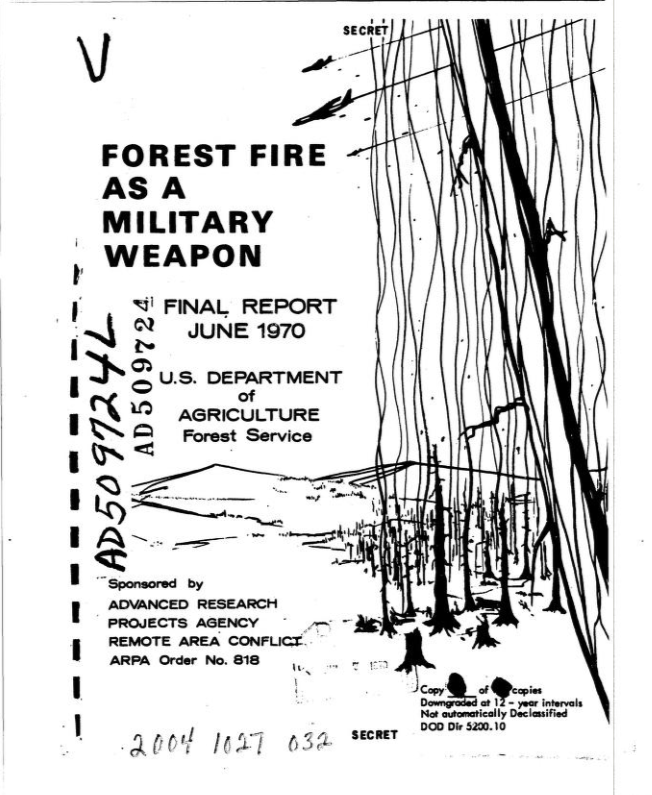



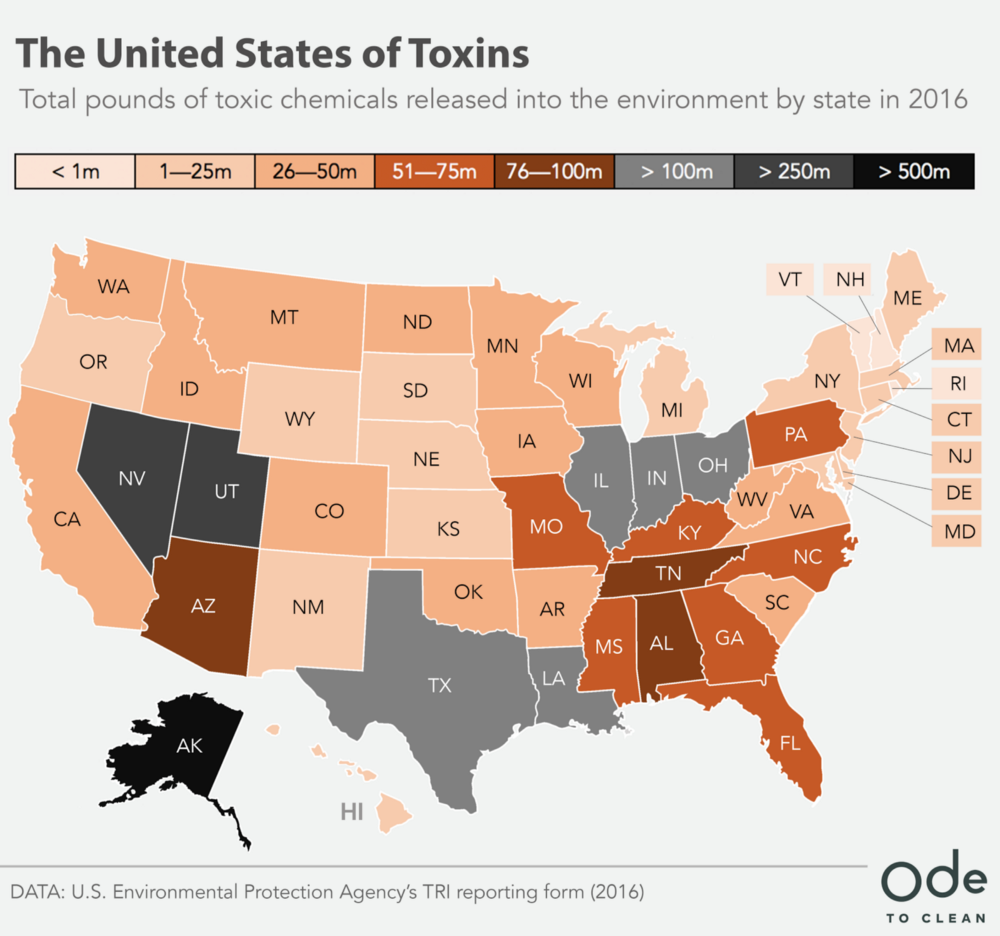
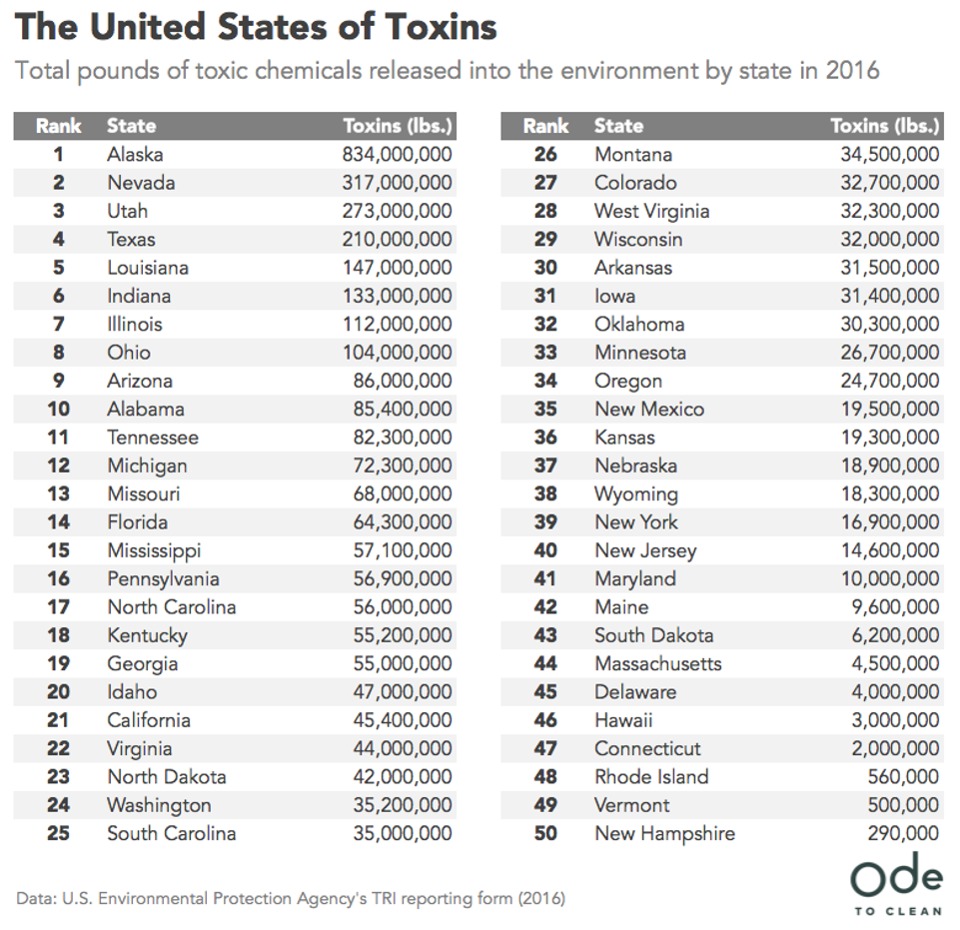
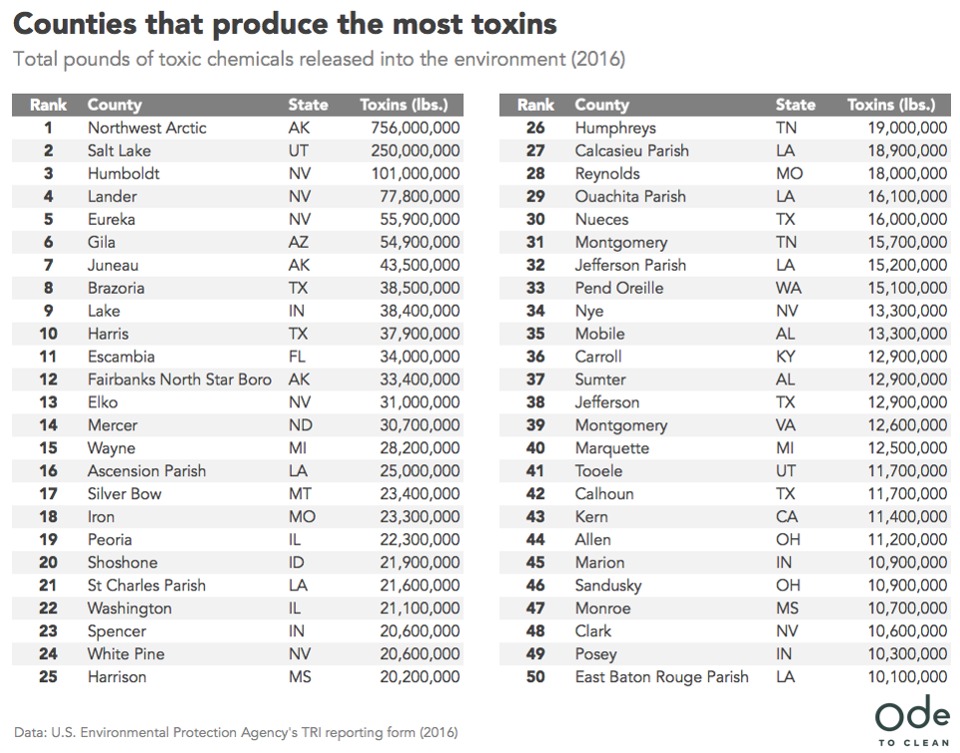
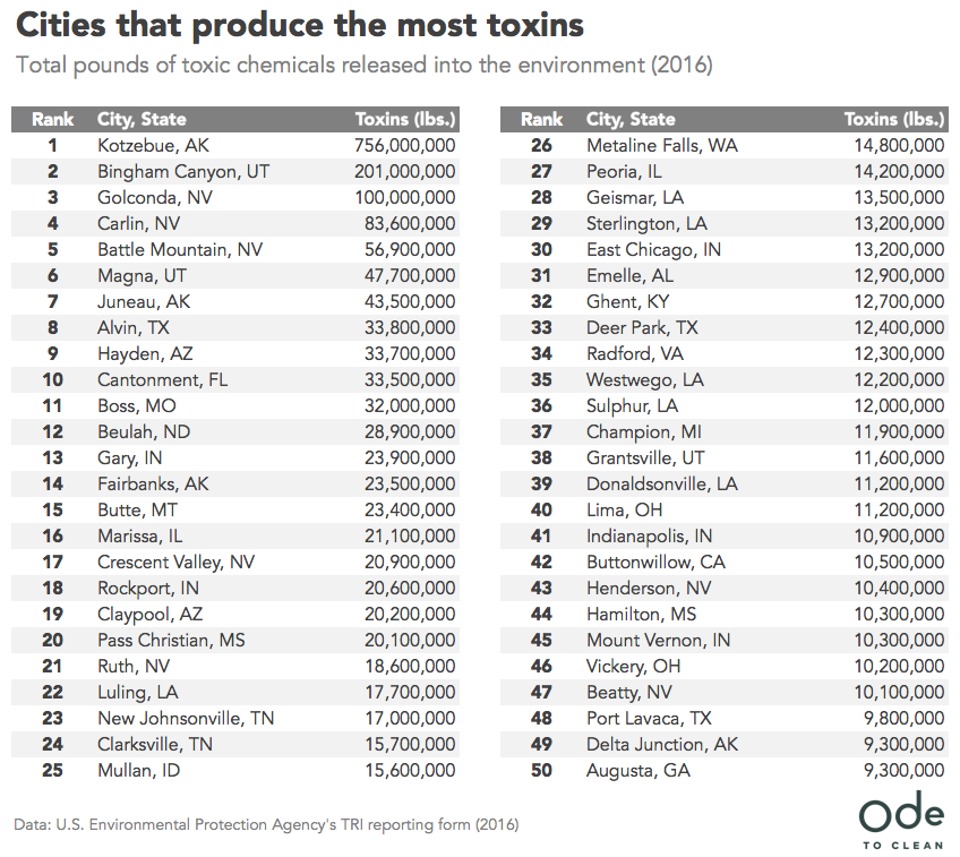
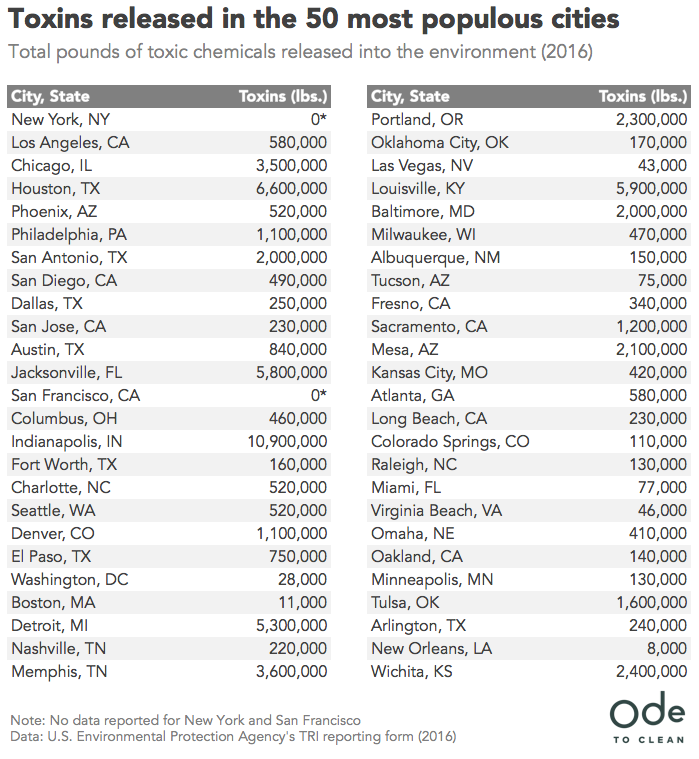

 RSS Feed
RSS Feed

